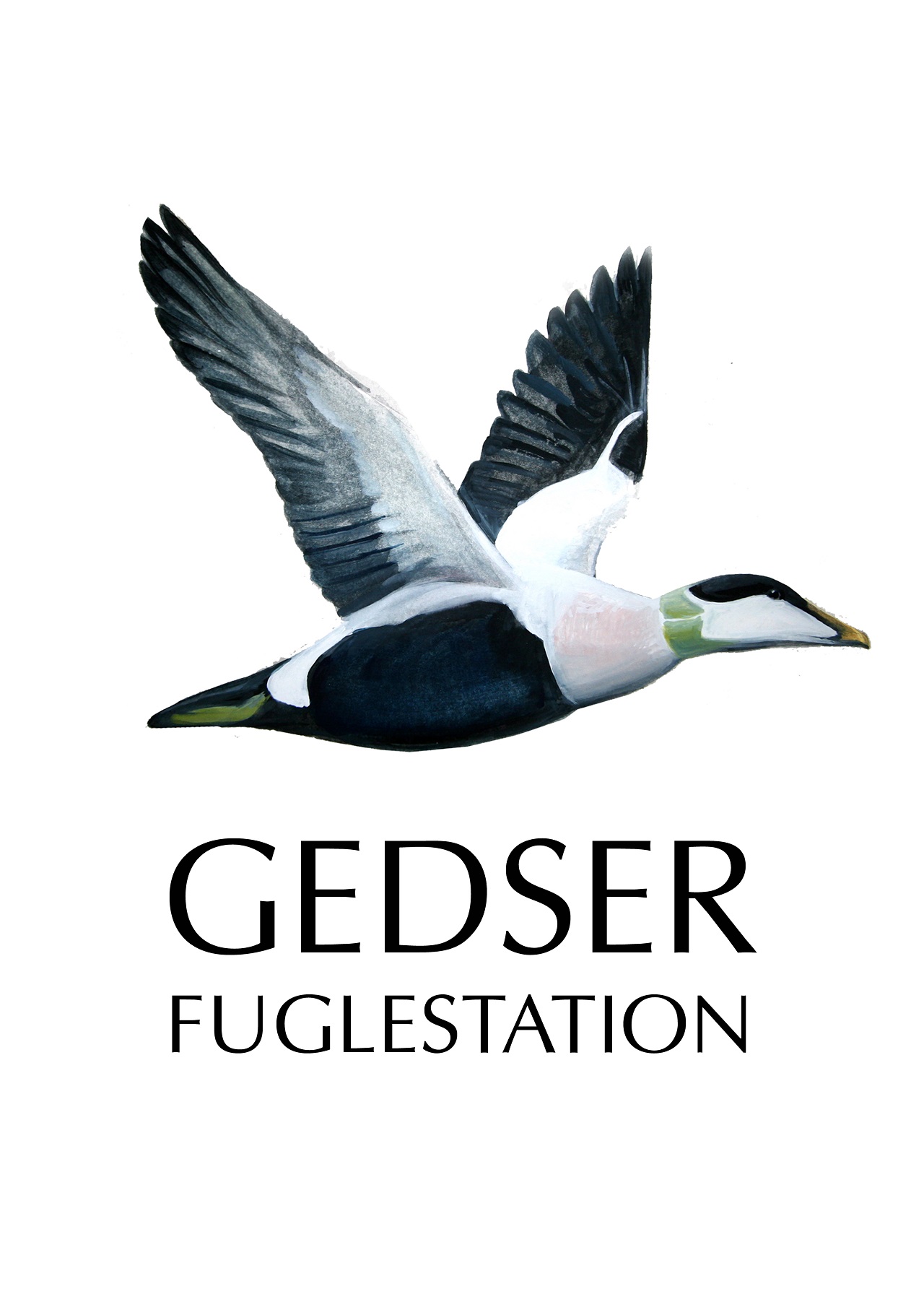Gedser Fuglestation Blog
Her på Gedser Fuglestations blog bringes korte nyheder i dagbogsformat om hændelser på fuglestationen.
Biæder i luften
The ringing:
This morning, we caught 13 birds, 9 of them were new, in total we had 9 species. The highlight was a new Rosefinch “Karmindompap”! Already the 6th for the season, that’s three times as much as the Bird observatory caught last year.
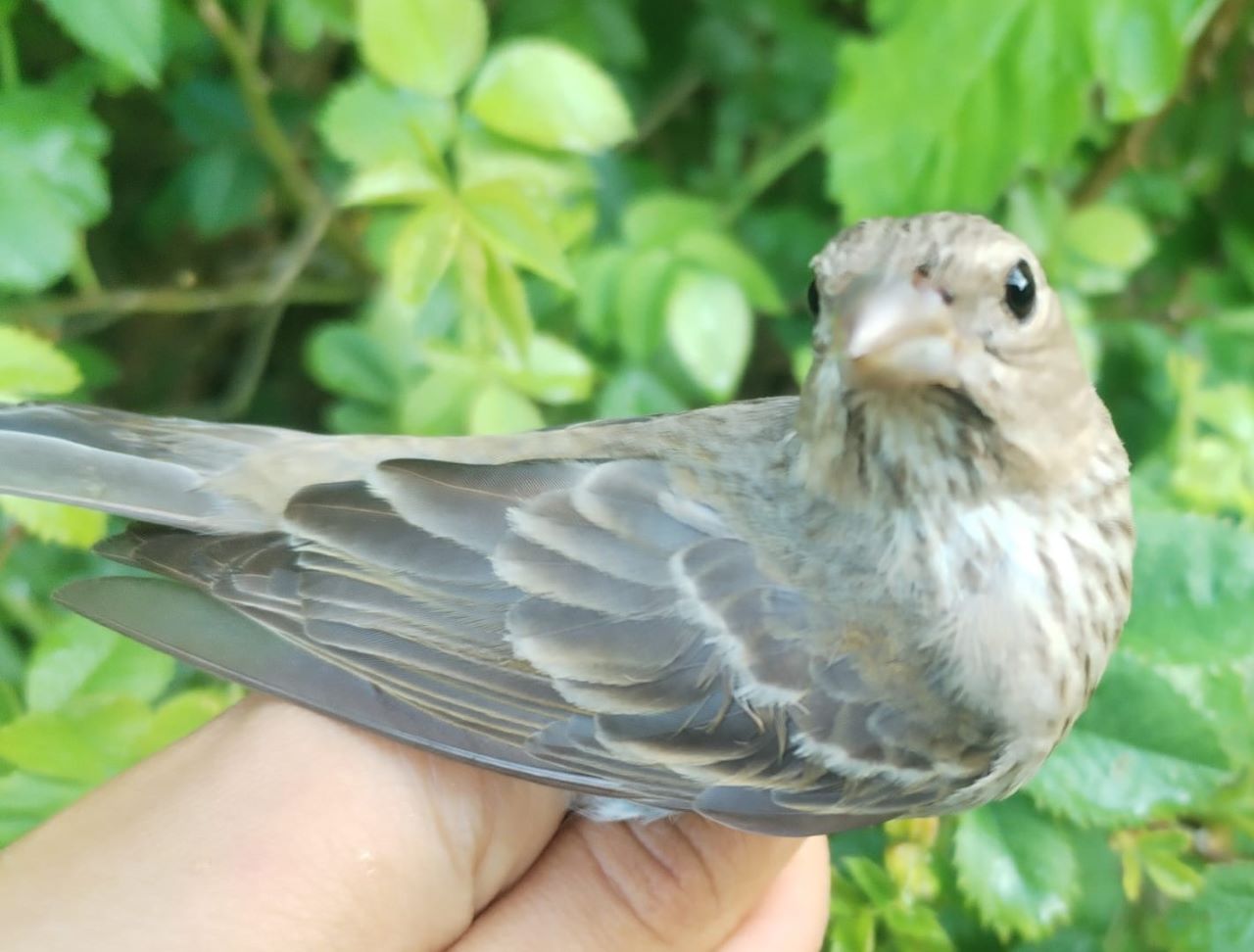
Common Rosefinch "Karmindompap"
But all in all, a slow morning.
Is this spring just exceptionally bad? Also the other Danish bird observatories notice low numbers of birds in the nets. Every day, we are printing out the daily report of birds we ringed that day, but it also shows the number of each species in the season and the total number of birds ringed in the season. That made me curious and I started to compare this spring season to 2023´s spring season. I was surprised finding out, that actually, this season, we ringed 322 more birds than last year. The reason for that was an exceptionally good March. While on the 31 of March 2023, 737 birds were ringed at Gedser Fuglestation, it was 1423 this year! In fact, the abundance of especially Goldcrests “Fuglekonge” as well as Great Tits “Musvit” and Blue Tits “Blåmejse”, but also Firecrest “Rødtoppet Fuglekonge” and Blackbird “Solsort” was very good this March. 213 Goldcrests “Fuglekonge” in 2024 compared to 66 in 2023. 342 Great Tits “Musvit” this March compared to 65 in 2023. 183 Blue Tits “Blåmejse” in March 2024, it was 26 in 2023.
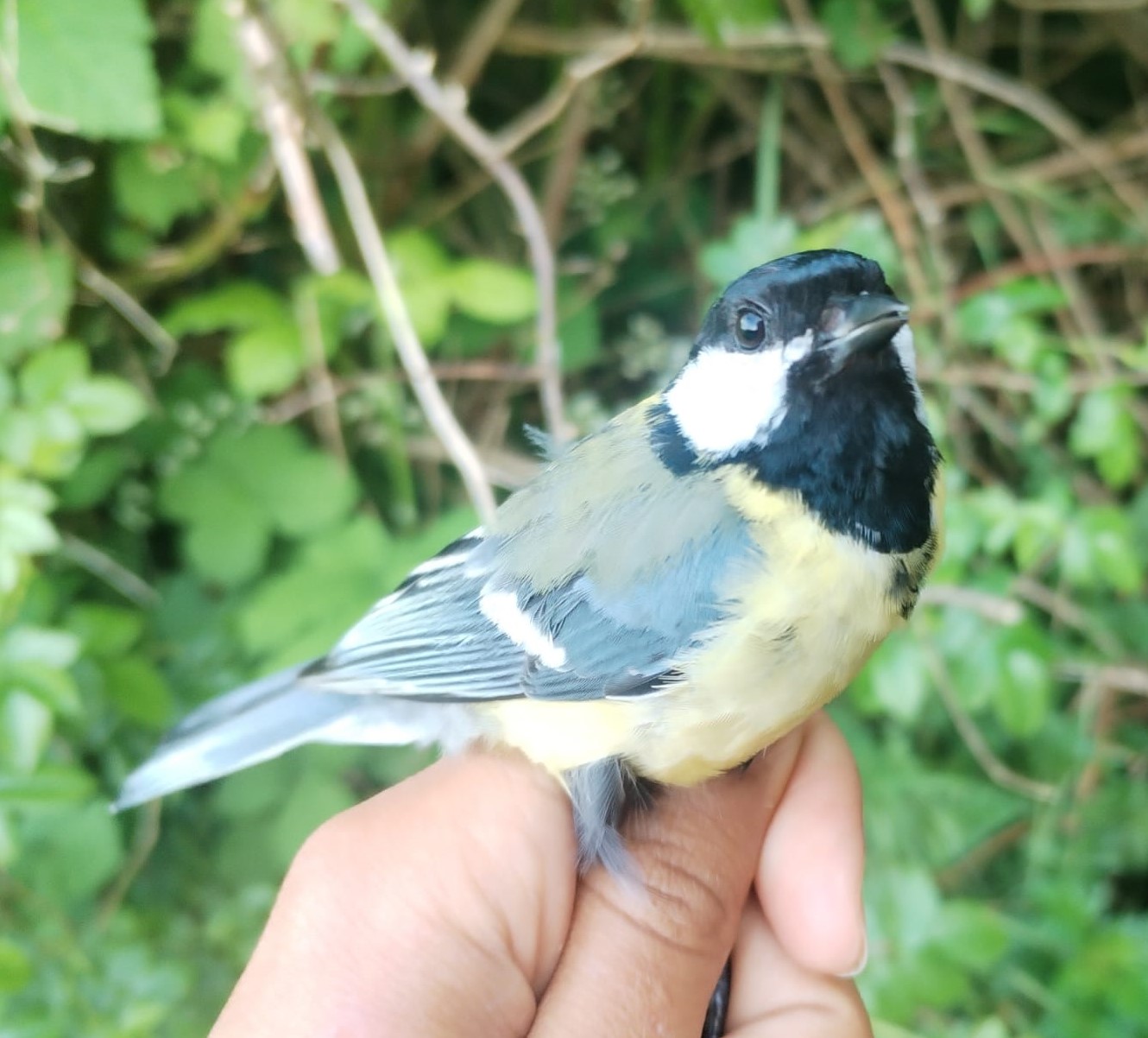
Great Tit "Musvit"
Just one species seemed to be a bit behind in March 2024, which is the Wren “Gærdesmutte”, 133 Wrens were winged in March 2023 while it was just 75 this year.
But April and May 2024 indeed had less birds than in 2023: 872 birds were ringed in April 2023 while it was just 591 this year, 524 birds were ringed on the 25th of May 2023, this May, it is just 451 birds.
So I was expecting it to be the long-distance migrants, that are missing in abundances. But I was wrong with that. Comparing the data of April 2023 to April 2024, I noticed, that many birds had arrived quite early this year. Especially Willow Warbler “Løvsanger” and Lesser Whitethroat “Gærdesanger”, to Africa-migrants, arrived quite early this year. While in 2023, just 6 Willow Warblers were caught in the nets by the end of April, it was double the number in 2024: Twelve individuals already caught in the nets. 2023, the station just caught just 11 Lesser Whitethroats “Gærdesanger” by the end of April, this year it was 41. Also birds, that are migrating shorter distances, as Chiffchaff “Gransanger” and Blackcap “Munk” were not doing bad this spring, compared to last years` spring. So which birds were missing this April? It was the Dunnock “Jernspurv” that I noticed was caught in bigger abundances last year: 222 birds in 2023 while it was just 89 in 2024. And again, the Wren “Gærdesmutte” was low in April, just 42 birds this April while it was 93 Wrens in April 2023.
Looking at May, it was also not really the long-distance migrants that are missing. The only species that looks quite low this May is the Common Whitethroat “Tornsanger”, we nearly had double the amount by that time last year: 63 Common Whitethroats “Tornsanger” in May 2023 and just 33 this year. But the abundance of Dunnocks “Jernspurv” is very low this May (And this whole spring). Just 20 Dunnocks “Jernspurv” were ringed this year while it was 141 in May 2023.
So it seems that it is actually these little brown and inconspicuous birds as Wren “Gærdesmutte” and Dunnock “Jernspurv” that we are missing and it is not our long-distance migrants, that are stuck somewhere in more southern parts of Europe or did not even return from their wintering grounds.
It might just be the cold spring weather and the constant winds from easterly direction, without big weather changes, that make this spring appear so slow, as the missing weather changes do not bring waves with new birds. They just all drip in slowly… And maybe Wren “Gærdesmutte” and Dunnock “Jernspurv” have had bad breeding success last year?
Lets see how it develops. There are still some weeks to go until the end of the spring season. Still birds on the way. And all in all, we are not low in numbers of birds in the nets. A slow April after a exceptional good March and not the best May. And some species are doing quite well, look at the Rosefinch “Karmindompap”!
Moths: Today 19 moth species of which 6 were new for the season (bold in the table below). The Ege-månemåler was the absolute highlight. In Naturbase there are only three entries of before 2014. The species is rarely seen and is sometimes attracted to light late in the night (site of the Vlinderstichting). It is according to the books mostly found in Lolland, Falster and Møn, but only single observations. It was also for me a new species.
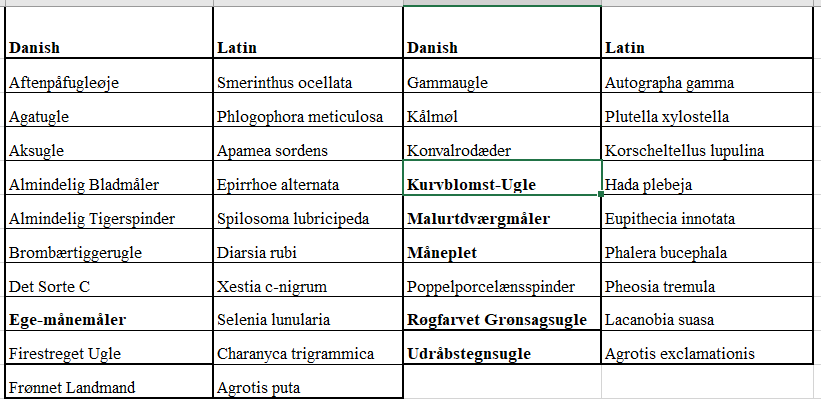
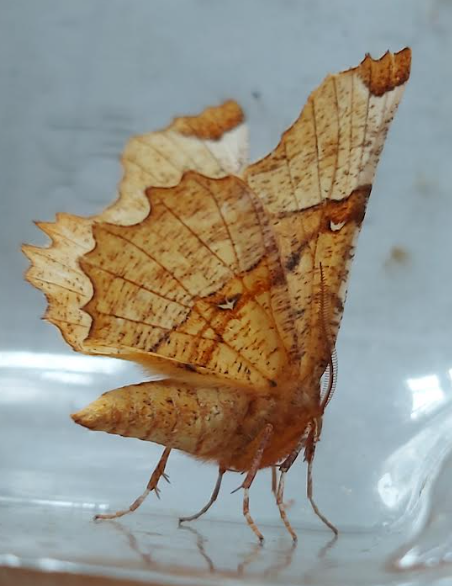 Ege-månemåler (Lunar Thorn) - Foto: Robert Luttik/GFU
Ege-månemåler (Lunar Thorn) - Foto: Robert Luttik/GFU
Trækket på Odden: Lidt mere vind fra nordøst og skyer gav en koldere morgen end forventet, og tallene var så små, at det var svært at afgøre med sikkerhed, hvilke bevægelser der var reelt træk eller bare lokale flytninger, selv om der var en del åbenlyse trækfugle i området. I krattet på Odden sang en Kærsanger (Acrocephalus palustris) en Havesanger (Sylvia borin) og en Karmindompap (Carpodacus erythrinus), som egentlig ikke hører til på lige netop den biotop. Det var ganske givet trækfugle, som bare holdt pause der.
En Bjergvipstjert (Motacilla cinerea) og en Grå Fluesnapper (Muscicapa striata) hørte naturligt til på Odden, men brugte den blot som rasteplads.
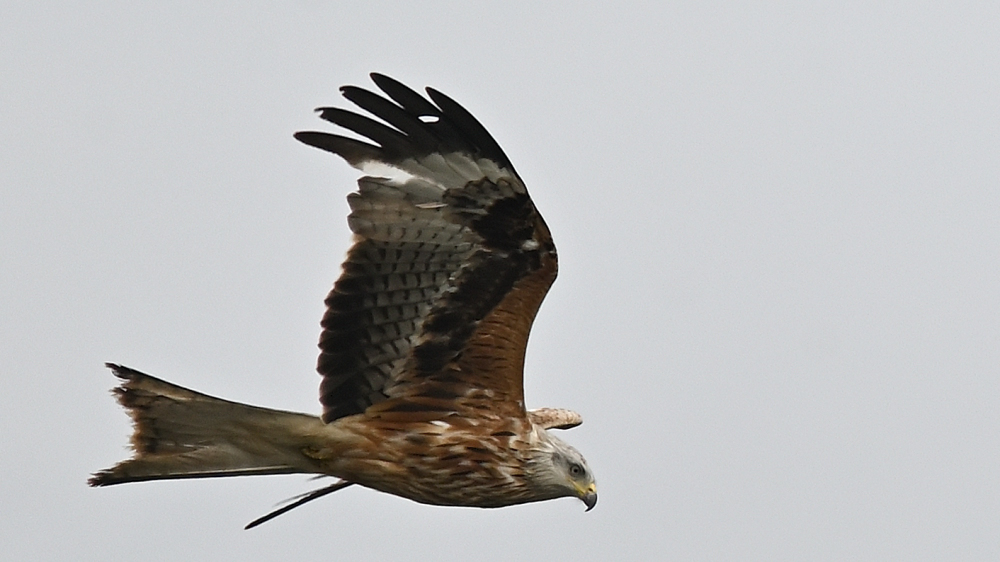
På vandet svømmede en Havlit (Clangula hyemalis) alene langs stranden. Den burde være væk nu på vej mod nord, men var måske ikke helbredsmæssigt på toppen til den anstrengende tur. Den lange hale burde stritte opad, men hang bogstaveligt talt i vandskorpen.
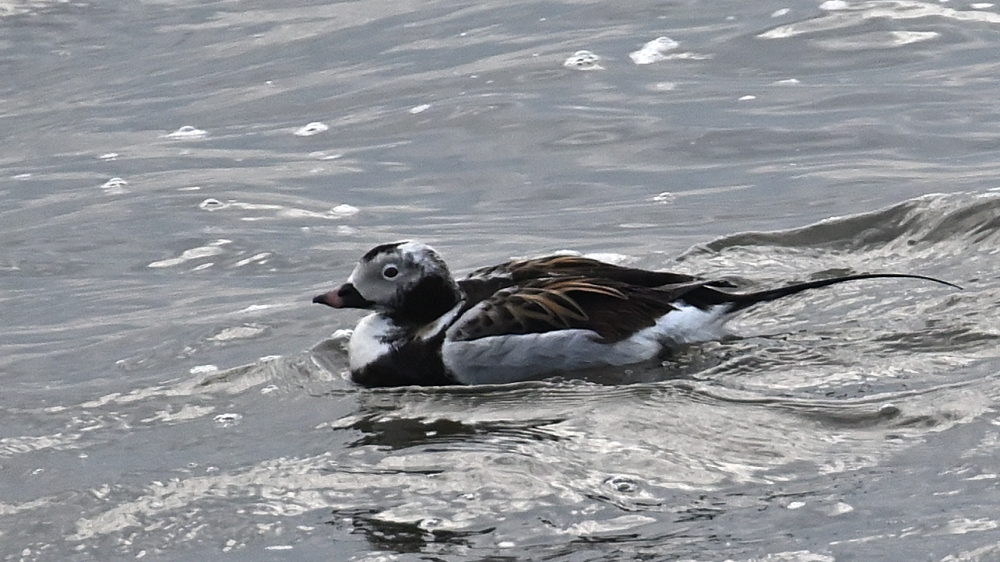
Da vi lukkede for tælleriet og gik hver til sit, hørte og så Louis A. Hansen på vej ind mod Gedser en Biæder (Merops apiaster) i et træ ved vejen. Flere andre nåede at opleve fuglen, før den sidst blev hørt kalde på vej ud mod Odden. Da vi spiste ude fredag aften i fuglestationens have mente nogle af os også, at vi hørte en Biæder, men vi slog det hen som formentlig en efterligning i sangen hos en Guldbug (Hippolais icterina) i haven – måske var det alligevel en Biæder allerede da, og med lidt held får vi den måske at se på Odden søndag morgen.
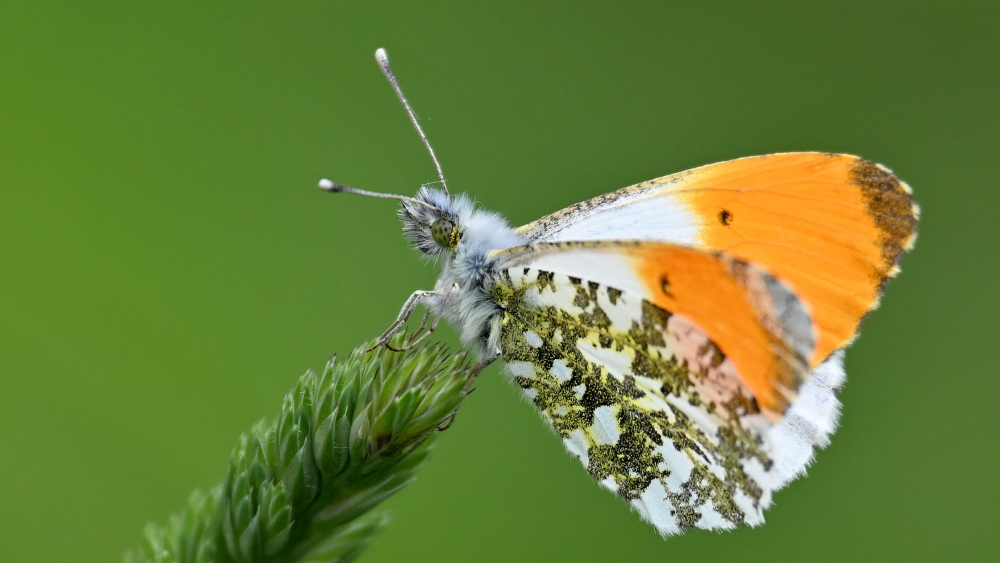
Se alle observationer på Gedser Odde fra lørdag i DOFbasen.
Folk på stationen: Hanelie Sidhu, Robert Luttik, Ole Friis Larsen + Christoffer Hansen.
